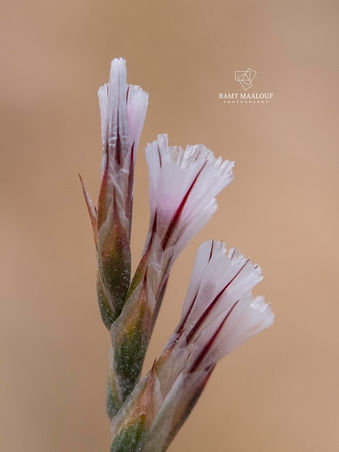Family |
Plumbaginaceae
Acantholimon libanoticum
Boiss.
Leb. Syr. Tur.
Acantholimon libanoticum Boiss.
(Nouvelle Flore du Liban et de la Syrie, vol. 3, Pl. VI nº 3; 1973)
Life‑form & habit : Spiny, glaucescent cushion‑shrub reaching up to 30 cm (or more) in height; old, withered leaves sheath the lower branchlets, while living leaves form a dense dome.
Leaves : Triangular in cross‑section, rigid and sharply pointed, margins slightly scabrid; 1 – 3 cm long, glabrous, bluish‑green.
Scape : Rather short; supports a tight cylindrical spike composed of 3–5 spikelets; rachis scabrous‑velvety and straight (not flexuous).
Bracts : Nearly equal in length, prominently keeled with broad membranous margins; the outer bract ends in a longer mucronate cusp.
Calyx : Tube slightly hispid and about as long as the white, very shallowly 5‑lobed limb; five reddish veins run to the limb’s edge.
Corolla : Rose‑pink; flowers appear late in the season.
Flowering period : Summer.
Habitat & elevation : High‑mountain limestone slopes and ridges.
Native range : Endemic to Lebanon; recorded from Jabal Barouk, the Cedars of ‘Ain Zehalta, Jabal Kneissé, Jabal Sannine, Mar Semaʿan, and neighbouring high crests of the Anti‑Lebanon and Mount Hermon ranges.

